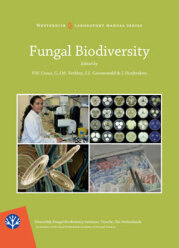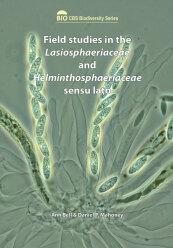Studies in Mycology No. 79-2014-P.W. Crous and J.Z. Groenewald-Fungal pathogens of food and fibre crops
1 654,55 Kč vč. DPH
1 654,55 Kč bez DPH
Fungal pathogens of food and fibre crops
|
Country | % VAT (books) | % VAT | |
|---|---|---|---|
| DEU | 7 | 19 | |
| HUN | 5 | 27 | |
| AUT | 10 | 20 | |
| BEL | 6 | 21 | |
| BGR | 9 | 20 | |
| DNK | 25 | 25 | |
| EST | 9 | 20 | |
| FIN | 10 | 24 | |
| FRA | 5,5 | 20 | |
| HRV | 5 | 25 | |
| IRL | 0 | 23 | |
| ITA | 4 | 22 | |
| CYP | 5 | 19 | |
| LTU | 9 | 21 | |
| LVA | 5 | 21 | |
| LUX | 3 | 16 | |
| MLT | 5 | 18 | |
| NLD | 9 | 21 | |
| POL | 5 | 23 | |
| PRT | 6 | 23 | |
| ROU | 5 | 19 | |
| GRC | 6 | 24 | |
| SVK | 10 | 20 | |
| SVN | 5 | 22 | |
| ESP | 7 | 21 | |
| SWE | 6 |
25 |
Cena platí pouze pro české zákazníky. Vzhledem k novému nařízení Evropského parlamentu musí být konečná cena od 1. července 2021 kalkulována podle země konečného určení. Platnou sazbu DPH ve vaší zemi naleznete v tabulce výše.
https://ec.europa.eu/taxation_customs
Záruka (měsíce): 24
Dostupnost: Do 14 dnů
This volume of Studies in Mycology focuses on emerging and established fungal diseases that pose a serious threat to global food and fibre supply. The issue contains six contributions, including a revision of the genus Bipolaris, which has species that are commonly associated with leaf spots, leaf blights, root and foot rots of field crops in the Poaceae, including rice, maize, wheat and sorghum. In total 47 species are accepted, and a taxonomic key provided for their morphological identification. Species of Colletotrichum in the C. destructivum species complex associated with anthracnose diseases of important crops such as clover, alfalfa, cowpea and lentil are also treated, and eight new species are introduced. The genus Pestalotiopsis encompasses fungi that are commonly isolated as endophytes, but also include a number of phytopathogens that cause a variety of post-harvest diseases, fruit rots and leaf spots, as well as other emerging diseases. Pestalotiopsis is delineated from two novel genera, namely Neopestalotiopsis and Pseudopestalotiopsis, and 35 novel species are introduced, along with several new combinations to emend monophyly of these genera. The genus Alternaria is also omnipresent, causing disease on a range of agriculturally important crops. Alternaria section Porri is the largest section in the genus, containing almost all Alternaria species with medium to large conidia and long beaks, some of which are important plant pathogens (e.g. Alternaria porri, A. solani and A. tomatophila). Based on a multi-gene phylogenetic study, 63 species are delineated, of which 10 are newly described, and 27 species names are synonymised. Species of Pyricularia are responsible for major diseases on Poaceae, including rice, wheat and millet. To clarify the taxonomic relationships among species that are magnaporthe- orpyricularia-like in morphology, the phylogenetic relationships among isolates representing a wide range of host plants are analysed. Species of Pyricularia s. str. are shown to belong to a monophyletic cladedefining the Pyriculariaceae, which is sister to the Ophioceraceae,representing two novel families distinct from the Magnaporthaceae. Furthermore, 10 novel genera, and seven novel species are also introduced, along with a re-evaluation of generic and species concepts within the Pyriculariaceae. The genus Ceratocystis s. l. (Ceratocystidaceae) includes serious plant pathogens, significant insect symbionts and agents of timber degradation that result in substantial economic losses. Based on a multi-gene phylogeny of 79 species residing in Ceratocystis s. l.,seven genera could be distinguished, including two novel genera, Davidsoniella and Huntiella. In total, 30 new combinations are introduced, providing a stable platform for the Ceratocystidaceae.
288 stran, formát A4, Paperback
 čeština
čeština




